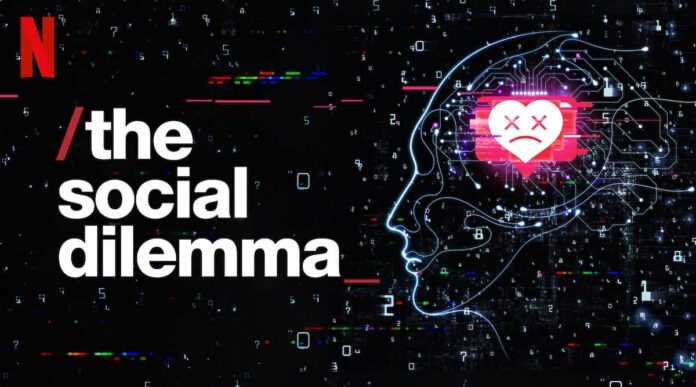Recently, the Netflix film The Social Dilemma received great attention and positive reviews because of its critique of mechanisms developed to monopolise user attention for-profit and their harms. It does so by interspersing interviews from tech gurus, industry experts, and academics along with the fictional story of a boy who becomes increasingly radicalised and alienated from his family because of social media. While we follow the boy, we also see three men who exist as a visual metaphor of AI who use the boy’s personal data to increase engagement for profit.
So why would Netflix stream and extensively advertise a movie which critiques the way tech companies use and store private data to track people’s movements? Why would any platform work against their own interests?
Of course, they aren’t. The documentary appropriates critiques of mass media and the culture industry and fuses it with liberal anxieties surrounding social media. These anxieties are especially with regards to the mainstreaming of the radical right and left-wing discourses. What emerges is an ahistorical and ideologically lacking movie that induces moral panic. Because of its endorsement of the neoliberal-capitalist social order, Social Dilemma also fails to posit any real solutions to the issue of surveillance capitalism.
4. Editing and Storytelling
Throughout the Social Dilemma, there are barely any quiet moments where the viewer can listen to the dialogue without visual and audio cues manipulating their responses. We also extensively follow Tristan Harris in staged scenes which make him appear more authentic and real. He does a magic trick, talks about his childhood, practices a Ted talk for no one. Other interviewees who are prominently featured- white industrialists and tech engineers- seem baffled at the start, as if they’re just grappling with their role. This creates an “authenticity hoax”, making them more trustworthy. Netflix describes the background music as “eerie” and the continued use of it along with additional sound signalling danger creates a sense of doom.
Of course, every film uses these, but not to the extent as the Social Dilemma. In the first half of the film, after each sentence from one interviewee, it cuts to a different interviewee. If this continues for more than a few minutes, they cut to a visual graphic. The documentary almost reads as if it was made like a social media platform in itself; the lack of continued and focused dialogue is meant to cater to the short attention spans of its viewers, making every moment as gratifying as possible, which the movie itself describes as “attention economy”. Because of this, other than a few repeated core concepts, the documentary uses many keywords in hopes that at least some of them will grab our attention. Very little time is actually spent on most of these concepts or their implications. Because of this people would come out of the film reaffirming their existing beliefs, and not be challenged.
























